
Physical and Chemical Aspects of the Study of Clusters Nanostructures and Nanomaterials
Scope & Guideline
Unveiling the Chemistry of Tomorrow's Materials
Introduction
Aims and Scopes
- Nanostructured Materials and Their Properties:
Research focused on the synthesis, characterization, and application of nanostructured materials, including metals, oxides, and composites, exploring their unique physical and chemical properties. - Simulation and Modeling Techniques:
Utilization of computational methods, such as molecular dynamics and Monte Carlo simulations, to predict the behavior of nanostructures, understand their formation mechanisms, and evaluate their properties. - Surface and Interface Phenomena:
Studies addressing surface effects and interfacial interactions in nanomaterials, which are crucial for applications in catalysis, sensing, and electronics. - Green Synthesis and Environmental Applications:
Exploration of environmentally friendly synthesis routes for nanomaterials, and their potential applications in environmental remediation and sustainable technologies. - Biocompatible and Biomedical Nanomaterials:
Research on the development and application of nanostructures in biomedical fields, focusing on drug delivery, imaging, and tissue engineering.
Trending and Emerging
- Nanostructured Catalysts and Environmental Remediation:
Increased focus on the development and application of nanostructured catalysts for environmental remediation, highlighting their effectiveness in degrading pollutants and converting waste into valuable products. - Advanced Characterization Techniques:
Emerging interest in advanced characterization techniques, including in situ and operando methods, which provide deeper insights into the behavior of nanomaterials under real-world conditions. - Integration of Machine Learning in Nanotechnology:
A rising trend in utilizing machine learning and artificial intelligence to accelerate the discovery and optimization of nanomaterials, streamlining the research process and enhancing predictive modeling. - Nanomaterials in Energy Applications:
Significant growth in research related to the use of nanomaterials in energy storage and conversion technologies, such as batteries, supercapacitors, and solar cells, reflecting the urgent need for sustainable energy solutions. - Biomimetic and Bioinspired Nanomaterials:
An emerging theme focusing on the design and synthesis of nanomaterials inspired by biological systems, which showcases potential applications in biomedicine and material science.
Declining or Waning
- Traditional Bulk Material Studies:
Research on bulk materials and their properties is becoming less frequent as the focus shifts more towards nanoscale phenomena and applications, which offer unique advantages over their bulk counterparts. - Basic Theoretical Concepts without Experimental Validation:
There is a noticeable decline in papers that present purely theoretical models without accompanying experimental validation. The trend is moving towards integrating theoretical predictions with experimental results to provide a more comprehensive understanding. - Applications in Conventional Industries:
Topics related to the application of nanomaterials in traditional industries, such as construction and manufacturing, are appearing less frequently as researchers explore more innovative and high-tech applications.
Similar Journals

MRS Advances
Fostering Interdisciplinary Discoveries in Material ScienceMRS Advances, published by Springer Heidelberg, is an esteemed academic journal that serves as a vital platform for disseminating cutting-edge research in the fields of condensed matter physics, materials science, and mechanical engineering. With an ISSN of 2731-5894 and an E-ISSN of 2059-8521, the journal is hosted in Switzerland and encompasses an impressive spectrum of innovative studies that impact both theoretical and practical applications. Throughout its converged years from 2012 and continuing through 2024, MRS Advances has established itself with notable rankings, including Q4 in condensed matter physics and Q3 in several related categories. This journal not only enriches the academic community with its rigorous peer-reviewed articles, but also encourages open discussions that further advance research innovations. Although currently not designated as an open-access journal, its accessibility through institutional subscriptions ensures that professionals, researchers, and students can engage with the latest advancements in the material science arena. Emphasizing its relevance, MRS Advances is dedicated to fostering interdisciplinary collaboration and inspiring new discoveries within the global research community.

SOFT MATERIALS
Illuminating the Science Behind Soft MaterialsSOFT MATERIALS is a premier journal specializing in the dynamic and interdisciplinary fields of chemistry, condensed matter physics, and materials science. Published by Taylor & Francis Inc., the journal serves as a vital platform for researchers and professionals to disseminate their cutting-edge findings related to soft materials, which are pivotal to advancements in various applications such as nanotechnology, biotechnology, and polymers. With an ISSN of 1539-445X and an E-ISSN of 1539-4468, this journal has successfully built a reputation within the academic community since its inception in 2004. As of 2023, SOFT MATERIALS is ranked within the Q3 category in Chemistry (miscellaneous), Condensed Matter Physics, and Materials Science (miscellaneous), reflecting its growing influence as a respected source of scientific knowledge. Although it does not currently operate under an open access model, its substantial impact factor and Scopus rankings, which place it in the 39th to 45th percentile across pertinent categories, highlight its quality and significance in fostering research collaboration and discourse among scholars and practitioners worldwide. The journal's objectives include enhancing the understanding of the physical, chemical, and material properties of soft materials, making it an essential resource for students, researchers, and professionals passionate about materials innovation and development.
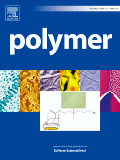
POLYMER
Exploring Innovations in Materials ChemistryPOLYMER, an esteemed journal published by Elsevier Science Ltd, stands at the forefront of polymer science, presenting cutting-edge research that encompasses the realms of Materials Chemistry, Organic Chemistry, and Polymers and Plastics. With a remarkable impact factor reflecting its significance in the academic community, POLYMER has been a vital resource since its inception in 1960, contributing to a converged body of knowledge through to 2024. Rated Q1 in all relevant categories as of 2023, and boasting impressive Scopus rankings, this journal not only facilitates advanced discussions in polymer synthesis, characterization, and applications but also serves as a critical platform for collaborative research among scholars, professionals, and students. While it offers content primarily via subscription, POLYMER remains dedicated to fostering innovation and excellence in the field, making it an essential read for anyone passionate about polymer science.

Frontiers in Nanotechnology
Advancing the Boundaries of Nanotechnology ResearchFrontiers in Nanotechnology, published by FRONTIERS MEDIA SA, is an esteemed open access journal that has established itself as a premier platform for the dissemination of innovative research in the rapidly evolving field of nanotechnology since its inception. Based in Switzerland, the journal is dedicated to advancing knowledge across multiple disciplines, including Atomic and Molecular Physics, Biomedical Engineering, Electrical and Electronic Engineering, and Computer Science Applications. With a remarkable track record, it maintains a commendable Category Quartile ranking of Q2 across various fields in 2023, highlighting its influence and the quality of research it publishes. Researchers will find this journal an essential resource for accessing cutting-edge developments and findings, enriched by its strong performance in Scopus rankings—positioned firmly within the top percentiles in key areas. As an open access publication since 2020, Frontiers in Nanotechnology champions the democratization of knowledge, ensuring that the latest advancements are freely available to the global academic community, enhancing collaborative efforts and driving innovation.

FULLERENES NANOTUBES AND CARBON NANOSTRUCTURES
Innovating the Future with Carbon-Based ResearchFULLERENES NANOTUBES AND CARBON NANOSTRUCTURES, published by Taylor & Francis Inc, stands at the forefront of research in the fields of nanotechnology, materials science, and organic chemistry. With an ISSN of 1536-383X and an E-ISSN of 1536-4046, this journal offers a critical platform for disseminating significant findings related to carbon-based nanostructures, materials characterization, and their innovative applications. Recognized for its scholarly impact, the journal enjoys a Q2 ranking in several fields, including Atomic and Molecular Physics, Materials Science, and Organic Chemistry, reflecting its commitment to quality research. Since its inception in 2002, it has maintained a rigorous publication standard and provides open access options, enabling a diverse audience, from researchers to industry professionals, to engage with the latest advancements. The journal's comprehensive scope across converged years until 2024 emphasizes its pivotal role in fostering knowledge in the rapidly evolving realm of nanoscience and nanotechnology. Researchers and practitioners alike are encouraged to explore the cutting-edge research showcased in this vital resource.
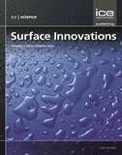
Surface Innovations
Connecting Scientists for Groundbreaking DiscoveriesSurface Innovations, an esteemed journal published by Emerald Group Publishing Ltd, serves as a crucial platform for researchers and professionals working within the fields of Materials Chemistry, Process Chemistry and Technology, and Surfaces, Coatings and Films. Launched in 2013, this journal has garnered attention for its commitment to advancing knowledge and innovation, holding a distinguished Q3 ranking in multiple categories as of 2023. With a focus on the latest methodologies and applications in surface science, Surface Innovations not only facilitates the dissemination of cutting-edge research but also encourages interdisciplinary collaboration among scientists and engineers. While not an open-access journal, it offers numerous options for accessibility to engage a wide array of audiences, making it a valuable resource for those looking to expand their understanding and expertise in this rapidly evolving field. The journal's consistent inclusion in high-ranking Scopus categories further underscores its academic impact and relevance.
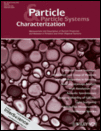
PARTICLE & PARTICLE SYSTEMS CHARACTERIZATION
Elevating Standards in Particle CharacterizationPARTICLE & PARTICLE SYSTEMS CHARACTERIZATION is a distinguished journal dedicated to advancing the knowledge within the fields of Chemistry, Condensed Matter Physics, and Materials Science. Published by WILEY-V C H VERLAG GMBH in Germany, this journal has established a solid reputation since its inception in 1984, showcasing research aimed at understanding the intricate properties and behaviors of particulate systems. With an impressive Q2 ranking in its respective categories and Scopus ranks indicating a robust standing in the global research community, it serves as an essential resource for researchers, professionals, and students. Although it does not currently offer Open Access options, its comprehensive articles and reviews provide valuable insights that contribute significantly to the ongoing discourse in these scientific domains. As it prepares to celebrate four decades of publication, PARTICLE & PARTICLE SYSTEMS CHARACTERIZATION continues to provide a vital platform for emerging knowledge, fostering innovation and collaboration among scientists dedicated to the study of particle systems.

Journal of Nano Research
Connecting Scholars Through Nano InsightsThe Journal of Nano Research, published by Trans Tech Publications Ltd, is a distinguished academic journal dedicated to the rapidly evolving field of nanotechnology and materials science. With an ISSN of 1662-5250 and an E-ISSN of 1661-9897, the journal has been an important platform for researchers and professionals since its inception in 2008, continuing to provide high-quality peer-reviewed research through to 2024. Nestled in Switzerland, the Journal of Nano Research plays a pivotal role in disseminating cutting-edge findings, as recognized by its categorization in Q3 for Materials Science and Physics while being positioned in Q4 for Nanoscience and Nanotechnology as of 2023. With Scopus rankings highlighting its impact, including Rank #129 in general Physics and Astronomy and Rank #300 in Materials Science, this journal is crucial for academics seeking to stay ahead in research trends and innovations in nano-related disciplines. Although it operates under a subscription model, the journal's objectives include fostering collaboration and knowledge-sharing among researchers, making it an invaluable resource for anyone immersed in the world of nanotechnology.
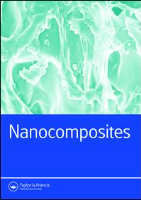
Nanocomposites
Bridging Disciplines through Nanocomposite ResearchNanocomposites, published by Taylor & Francis Ltd, is a leading open-access journal dedicated to the interdisciplinary field of nanomaterials and their applications in composites. With its ISSN 2055-0324 and E-ISSN 2055-0332, the journal has established itself as a premier platform for disseminating high-quality research since its inception in 2015. It is notable for its impressive Q1 rankings across various categories, including Ceramics and Composites, Materials Chemistry, Mechanical Engineering, and Mechanics of Materials, reflecting its significant impact on the scientific community. The journal is recognized for its rigorous peer-review process and rapid publication times, making it an essential resource for researchers and professionals seeking to advance knowledge in the synthesis, characterization, and application of nanocomposite materials. With an open access policy implemented in 2017, Nanocomposites ensures that cutting-edge research is accessible to a global audience, fostering collaboration and innovation across disciplines. Emphasizing the critical role that nanocomposites play in advancing technology, this journal invites contributions that push the boundaries of current understanding and application.
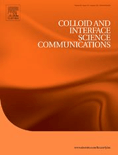
Colloid and Interface Science Communications
Unveiling Breakthroughs in Surface PhenomenaColloid and Interface Science Communications is a prestigious peer-reviewed journal published by Elsevier, specializing in the vibrant fields of colloid and surface science, along with biotechnology. With an impressive open access policy initiated in 2022, this journal ensures wide dissemination of groundbreaking research. Its impact is reflected in its high standings within various Scopus category quartiles—ranked Q2 in Biotechnology and Colloid and Surface Chemistry, and Q1 in Materials Chemistry, Physical and Theoretical Chemistry, as well as Surfaces, Coatings and Films for 2023. Furthermore, it boasts exceptional Scopus rankings, including a top percentile position in several materials science categories, indicating its significant contribution to the scientific community. Published in the Netherlands, Colloid and Interface Science Communications aims to foster knowledge sharing and collaboration by providing a platform for innovators and researchers to explore cutting-edge developments in surface phenomena and materials interactions. As a key resource for researchers, professionals, and students alike, it plays a critical role in advancing our understanding and application of colloidal and interface science.